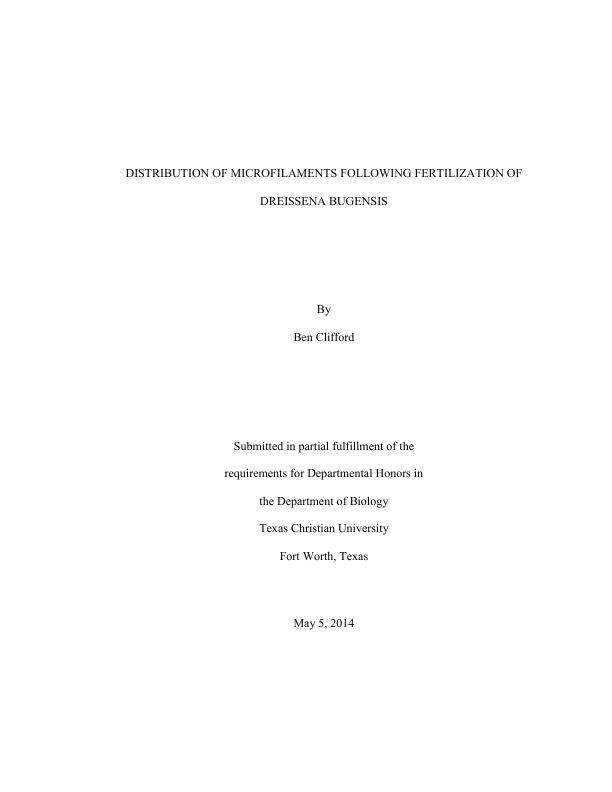Distribution of Microfilaments Following Fertilization of Dreissena bugensisShow full item record
| Title | Distribution of Microfilaments Following Fertilization of Dreissena bugensis |
|---|---|
| Author | Clifford, Ben |
| Date | 2014 |
| Abstract | Quagga mussels, Dreissena bugensis (D. bugensis), are an invasive species that are closely related to zebra mussels. In recent years, these mussels have infested many areas due to their ability to reproduce efficiently. This has led to the disruption of native ecosystems, clogged water intake pipes in water treatment plants, damage to ships and boats, and several other consequences. In the United States alone, it is thought to cost more than $200 million a year to deal with these mussels. Fertilization of D. bugensis occurs externally, as the bivalves release their gametes into the water. Following binding of the sperm to the egg, an insemination cone forms that helps facilitate the movement of the sperm nucleus to the egg cortex. After successful incorporation of the sperm nucleus into the egg, mitosis begins; and the spindle fibers form to initiate the first cleavage of the egg following fertilization. This study concentrates on the role of actin and where it is located at specific times following fertilization. This will help us understand the complex process of fertilization while possibly providing a way to slow the spread of D. bugensis. |
| Link | https://repository.tcu.edu/handle/116099117/7198 |
| Department | Biology |
| Advisor | Misamore, Michael |
| Additional Date(s) | 2014-05-05 |
Files in this item
This item appears in the following Collection(s)
- Undergraduate Honors Papers [1362]
© TCU Library 2015 | Contact Special Collections |
HTML Sitemap



